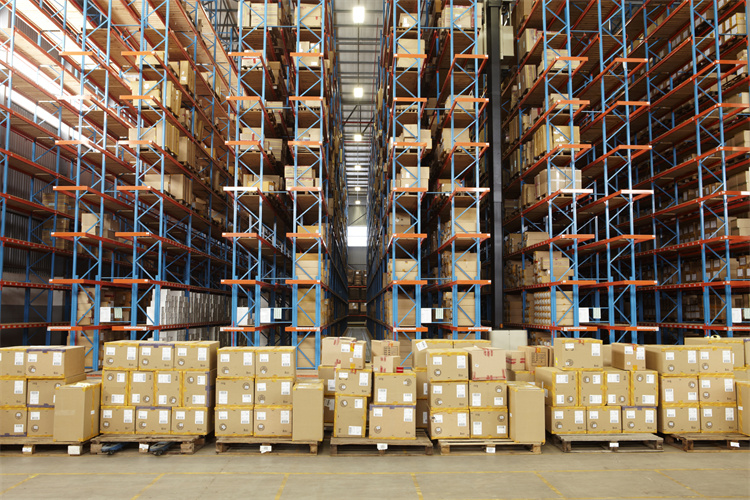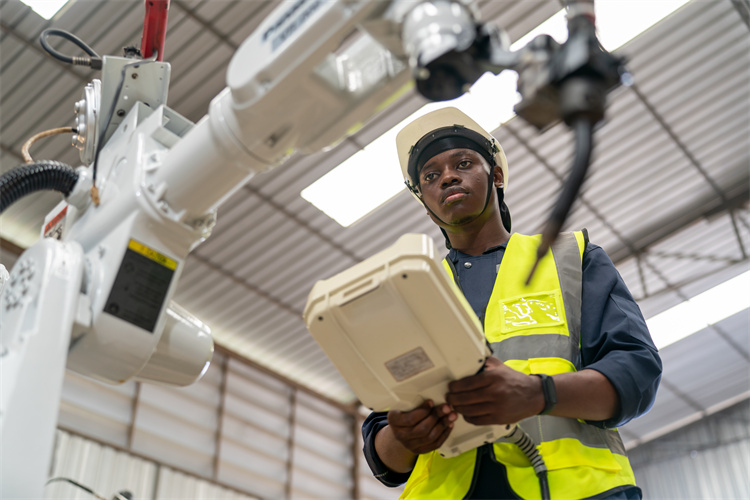Why Automation Isn't Taking Off in Japanese Warehouses

Warehouse Automation is revolutionizing industries around the globe. Projections indicate that by 2027, approximately 26% of warehouse sites will have adopted automation. The market for Warehouse Automation is anticipated to surpass $69 billion by 2025, underscoring a major transformation. However, Japan presents a distinct case. Despite the worldwide trend, Japan is slow to adopt Warehouse Automation. Cultural values and economic factors play a role in this hesitation. In Japan, companies often prioritize human labor over machines. The high cost of robotic systems further discourages many businesses. This situation in Japan raises questions about the future of Warehouse Automation in this technologically advanced country.
Current State of Warehouse Automation in Japan

Global Trends in Warehouse Automation
Warehouse automation is transforming industries worldwide. Many countries have embraced this technology to enhance efficiency and reduce costs. The global adoption rates of warehouse automation show a significant upward trend. Companies across various sectors invest heavily in automated systems. These investments aim to streamline operations and improve productivity.
Adoption Rates Worldwide
Countries like the United States and Germany lead in automation adoption. These nations have integrated advanced technologies into their warehouses. The adoption rates in these countries reflect a strong commitment to innovation. Many businesses in these regions recognize the benefits of automation. These benefits include increased speed and accuracy in order fulfillment.
Key Technologies Driving Automation
Several key technologies drive the automation revolution. Robotics, artificial intelligence, and machine learning play crucial roles. These technologies enable warehouses to operate with minimal human intervention. Automated guided vehicles (AGVs) and robotic arms handle tasks efficiently. These innovations reduce the need for manual labor in many processes.
Warehouse Automation in Japan
Japan presents a unique case in the realm of warehouse automation. Despite being a leader in robotics production, Japan lags in adopting these technologies in warehouses. Japanese companies often prefer to see real-world applications before investing. This cautious approach affects the pace of automation adoption.
Current Adoption Levels
The current adoption levels of warehouse automation in Japan remain relatively low. Many Japanese companies still rely on manual labor for various tasks. The lower labor costs historically made automation less attractive. However, a declining workforce has created a labor shortage. This shortage is gradually pushing companies towards automation.
Technologies in Use
Some Japanese warehouses have begun integrating automation technologies. Robotics and factory automation systems are slowly finding their way into operations. Companies retrain workers for new roles instead of laying them off. This approach reflects a cultural affinity for maintaining employment. The aging population in Japan also influences the acceptance of robots in workplaces.
Challenges Facing Warehouse Automation in Japan

Cultural and Workforce Factors
Japan holds a unique position in the realm of warehouse automation. The cultural landscape plays a significant role in shaping attitudes towards automation. Japanese society has a deep-rooted respect for tradition, yet it embraces cutting-edge technology. This duality creates an interesting dynamic in the adoption of warehouse automation.
Workforce Demographics
Japan faces a declining workforce. An aging population contributes to labor shortages. These shortages push companies to consider automation as a viable solution. However, many businesses still rely on manual labor. The historical preference for human craftsmanship remains strong. This reliance slows the pace of automation adoption in warehouses.
Cultural Attitudes Towards Automation
Japanese culture holds a unique view of machines and robots. Traditional beliefs see tools as having a life force spirit. This belief encourages a positive view of machines serving humans. Robots are not just tools; they are companions. Popular culture often depicts robots as friendly and helpful. This portrayal fosters acceptance of automation in everyday life. Yet, the cultural respect for human labor persists. This respect creates a cautious approach to fully embracing warehouse automation.
Economic and Regulatory Barriers
Economic factors also play a crucial role in the slow adoption of warehouse automation in Japan. The costs associated with implementing advanced technologies can be prohibitive for many companies.
Cost Implications
The high cost of robotic systems presents a significant barrier. Many Japanese companies hesitate to invest in expensive automation technologies. The initial investment can be daunting. Businesses weigh these costs against the benefits. Some companies find the return on investment uncertain. This uncertainty leads to reluctance in adopting warehouse automation.
Regulatory Environment
Despite these challenges, the potential for growth remains. Japanese companies continue to explore ways to overcome these barriers.
Case Studies and Examples
Warehouse automation has seen success stories in various countries. These examples offer insights into how Japan might overcome its challenges.
Successful Automation in Other Countries
Case Study 1
Germany stands out as a leader in warehouse automation. German companies have embraced technology to enhance efficiency. Robotics and AI play key roles in their operations. Automated systems handle tasks with precision. This approach reduces reliance on manual labor. Germany's success provides a model for other nations, including Japan.
Case Study 2
The United States also excels in warehouse automation. American companies invest heavily in technology. Advanced systems streamline processes and boost productivity. Automated guided vehicles and robotic arms are common in U.S. warehouses. These innovations lead to faster order fulfillment. The U.S. experience highlights the benefits of embracing automation.
Attempts at Warehouse Automation in Japan
Japan faces unique challenges in adopting warehouse automation. Cultural and economic factors influence the pace of change. However, some Japanese companies have made strides in this area.
Example 1
A leading Japanese electronics company has begun integrating automation. The company uses robots to manage inventory and sort products. This shift addresses labor shortages and improves efficiency. The company retrains workers for new roles, preserving jobs. This example shows how Japan can balance tradition with innovation.
Example 2
A major Japanese logistics firm has also embraced automation. The firm employs automated systems for packaging and shipping. These technologies enhance speed and accuracy in operations. The firm continues to explore new automation opportunities. This effort demonstrates Japan's potential for growth in warehouse automation.
Future Opportunities and Projections for Warehouse Automation in Japan
Warehouse Automation in Japan holds immense potential for growth. The global trend towards automation presents a promising opportunity for Japanese industries to enhance efficiency and productivity. Japanese companies can leverage emerging technologies and economic incentives to drive this transformation.
Potential for Growth in Automation
Emerging Technologies
Emerging technologies offer exciting possibilities for Warehouse Automation in Japan. Emerging technologies offer exciting possibilities. Robotics and artificial intelligence continue to evolve rapidly. These advancements enable warehouses to operate with greater precision and speed. Automated guided vehicles (AGVs) and robotic arms can perform complex tasks with minimal human intervention. Japan, known for its technological prowess, has the potential to lead in adopting these innovations.
Japanese culture embraces technology and innovation. Robots are not just tools but companions that assist in various tasks. This cultural acceptance of robots paves the way for increased automation in warehouses. As technology advances, Japanese companies can integrate these innovations into their operations seamlessly.
Economic Incentives
Economic incentives play a crucial role in encouraging Warehouse Automation in Japan. The government can provide tax breaks and subsidies to companies investing in automation technologies. These incentives reduce the financial burden associated with implementing advanced systems. Businesses can achieve cost savings and improved efficiency through automation.
The declining workforce in Japan creates a pressing need for automation. Labor shortages push companies to seek alternative solutions. Automation offers a viable option to address this challenge. By investing in automation, Japanese companies can maintain productivity levels despite a shrinking labor pool.
Strategies for Overcoming Barriers
Policy Recommendations
Policy recommendations can facilitate the adoption of Warehouse Automation in Japan. The government can streamline regulations to make it easier for companies to implement new technologies. Simplified compliance processes reduce the time and resources required for automation projects. Clear guidelines and support from regulatory bodies encourage businesses to embrace automation.
Collaboration between industry stakeholders and policymakers is essential. Industry leaders can provide valuable insights into the challenges faced by companies. Policymakers can use this information to develop effective strategies and policies. A collaborative approach ensures that regulations align with industry needs.
Industry Collaboration
Industry collaboration fosters innovation and knowledge sharing. Companies can form partnerships to share resources and expertise. Collaborative efforts accelerate the development and implementation of automation technologies. Industry associations can organize workshops and seminars to promote best practices.
Japanese companies can learn from successful automation initiatives in other countries. Case studies from Germany and the United States highlight the benefits of collaboration. By working together, Japanese companies can overcome barriers and drive Warehouse Automation forward.
Warehouse Automation in Japan holds significant promise. Emerging technologies and economic incentives create opportunities for growth. Policy recommendations and industry collaboration pave the way for overcoming barriers. As Japan embraces automation, warehouses can achieve new levels of efficiency and productivity.
The blog explored the slow adoption of warehouse automation in Japan. Cultural values and economic factors play significant roles in this trend. Japan's unique approach to technology and labor presents both challenges and opportunities. The future holds potential for growth as emerging technologies evolve. Economic incentives could encourage more companies to embrace automation.
See Also
Enhancing Efficiency: Warehouse Automation Simplified
Automated Tomorrow: Benefits of High-Tech Manufacturing Warehouses
The Importance of Automation in Warehousing for Businesses
